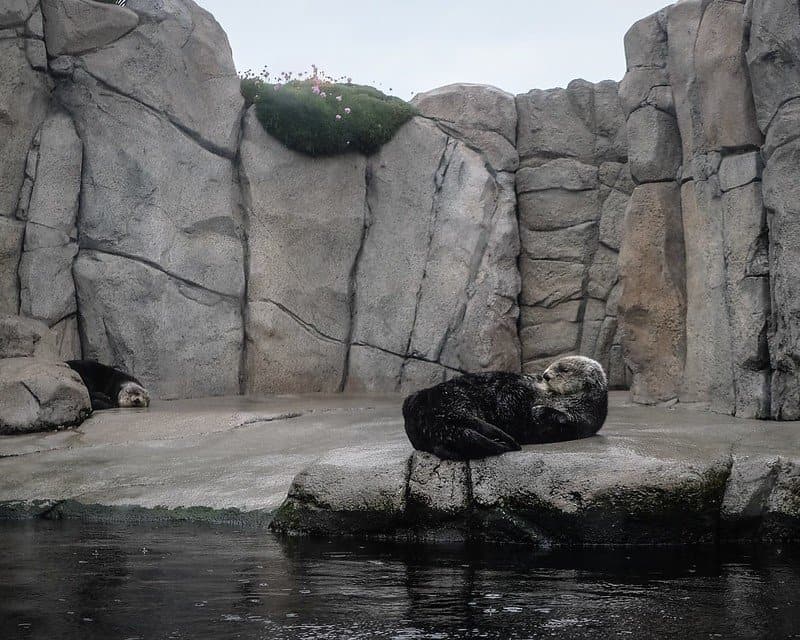Early adopters
At California’s Monterey Bay Aquarium, an adoption program is pairing orphaned otters with females living in captivity who teach the pups to become crusaders for the climate.
It all starts when wild otter pups who’ve lost their parents (often to shark attacks) are rescued from the ocean and handed over to female otters at the aquarium. The adoptive moms teach the pups how to do “sea otter things,” as Wired puts it, including how to use rocks to crack open sea urchins, which otters find delicious. Returning the pups to the ocean as voracious sea urchin eaters helps to preserve carbon-sequestering kelp forests, which sea urchins — whose numbers have ballooned in recent years — decimate if left unchecked.

Preserving kelp forests is a big deal — a healthy California kelp forest can cancel out the emissions of up to five million cars. The scheme appears to be working, as the otter pups thrive when returned to the wild. This has helped California’s otter population swell to 3,000 from a low of 50. Not surprisingly, the kelp forests have made a comeback too — a major one in Elkhorn Slough has expanded by 600 percent. “The [kelp forests] are removing carbon dioxide at rates that are up to 10 times as fast as we see in terrestrial systems,” said a scientist from Conservation International.
Soak it up
When the Rockaway Beach neighborhood of Queens, New York flooded during last summer’s storms, one spot stayed dry: the lot surrounding the affordable housing complex called Beach Green Dunes.
Weighed down by negative news?
Our smart, bright, weekly newsletter is the uplift you’ve been looking for.“Our site stayed bone dry,” said Walter Rodríguez Meyer, principal urban designer at Local Office Landscape and Urban Design, which designed the complex’s flood-fighting exterior. The design’s secret weapon is permeable pavement, a porous asphalt that sucks in water rather than funneling it into drains that can quickly become inundated. Underneath this pavement, “structural soil” leaves enough space for tree roots to grow freely. The roots intermingle, creating, in effect, an interconnected forest. These roots absorb the rainwater as it filters down through the pavement. The building’s manager described with amazement seeing the floodwaters simply vanish at the complex’s perimeter.
It’s the type of concept that groups like the Regional Plan Association, an influential New York area group, want entire streets to consist of, which could help keep neighborhoods dry even during the most torrential downpours. “They cost between 30 percent and 50 percent more to build on the capital side,” said Meyer, “but the life costs are exponentially lower.”
Can I borrow your bike?
How do you get more people to buy e-bikes? Lend them out for free. Many patrons of so-called e-bike libraries find that once they’ve had a taste, they can’t get enough of the pedal-assisted life.

At e-bike libraries, like one run by the nonprofit Local Motion in Vermont, novices get exposed to the still-new technology in the hopes that they’ll buy an e-bike and use it instead of their car. Research has shown it’s an effective tactic — people are more likely to reduce their car use if they own an e-bike than if they just own a regular bicycle. And an e-bike’s carbon impact is a small fraction of an electric vehicle’s.
The loaner approach seems to work. Some 17 percent of people who borrowed an e-bike through Local Motion had bought one of their own within 12 months. One participant let her 70-year-old father take a spin on the one she borrowed, and he traded in his motorcycle to buy one. “I think that was really the tipping point,” she said. “He had so much fun riding in it that that made it more fun for us too.”










